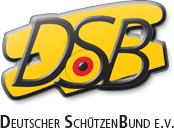Effect of shooting and fencing on subsequent swimming performance in high level pentathletes
(Auswirkung der Schießens und Fechtens auf die sich anschließende Schwimmleistung von Modernen Fünfkämpfern des Hochleistungsbereichs)
Pentathlon comprises five sport disciplines conducted in one day of competition. It can be supposed that the residual effect of prior exercise creates physiological responses that differ from performing the five disciplines as individual events.1 During the pentathlon competition the first discipline that can be influenced by prior exercise is swimming which is preceded by shooting and fencing. Indeed, the energy cost of swimming is greatly influenced by technique skill which can be hindered by fatigue and fasting occurred during the preceding hours of competition. Therefore, the purpose of this study was to examine the effect of shooting and fencing on subsequent swimming. Six male high level pentathletes participated in the study (age 17.3 ± 0.8 yrs, height 182.3 ± 4.2 cm, weight 73.0 ± 6.9 kg). Swimming time over 200m, swimming velocities corresponding to the accumulation of 2 (v2) and 4 (v4) mM of blood lactate, energy cost of swimming at v2 and VO2peak, have been assessed, each on a separate date, at rest and after a pentathlon competition limited to shooting and fencing. The first three parameters were measured in a 50m swimming pool, while the last two were carried out in an ergometric pool. Gas exchanges were measured by a portable breath by breath apparatus (K4b2, Cosmed, Italy) connected to a snorkel (Aquatrainer, Cosmed, Italy). Blood lactate samples were taken from the earlobe and analysed by an amperometric system (EBIO Plus, Eppendorf, Germany). Comparing the results gathered at rest (Re) and after competition (AC) it was found that in the latter situation swimming time over 200m was significantly longer (132.4 ± 4.7 s Re; 134.7 ± 4.7 s AC; P = 0.02), energy cost of swimming at the v2 was significantly higher (2994.1 ± 264.3 ml O2 Re; 3294.6 ± 264.3 ml O2 AC; P = 0.003), during the latter test blood lactate accumulation was significantly reduced (4.9 ± 0.4 mM Re; 3.9 ± 0.7 mM AC; P = 0.04) and the respiratory exchange ratio was also reduced eventhough non significantly (0.88 ± 0.1 Re; 0.83 ± 0.0 AC; P = 0.08). In the AC condition v2 and v4 were higher than in the Re situation (1.22 ± 0.0 m s-1 Re; 1.24 ± 0.1 m s-1 AC; P = 0.66 and 1.27 ± 0.0 m s-1 Re; 1.29 ± 0.1 m s-1 AC; P = 0.43, respectively). The test performed to determine VO2peak was carried out at the velocity of 1.43 m s-1 up to exhaustion, and the results indicated that in the AC condition VO2peak was reduced almost significantly (4375 ± 416 ml min-1 Re; 4102 ± 416 ml min-1 AC; P = 0.49), the time to exhaustion was significantly reduced (160.2 ± 30.8 s Re; 107.3 ± 20.6 s AC; P = 0.000), and peak blood lactate was significantly lowered (9.5 ± 1.2 mM Re; 8.9 ± 0.9 mM AC; P = 0.041).
This results suggest that subjects could be glycogen depleted in the AC with respect to the Re condition.2 At this regard the dietary habits of pentathletes should be carefully controlled. In the present study subjects followed the same time schedule both in the Re and the AC situation: at 12:00 PM had a light meal and at 4:30 PM carried out the swimming tests. In addition in the AC situation they performed the shooting at 1:00 PM and the fencing at 3:00 PM. Therefore, the lack of carbohydrates ingestion between the pentathlon competition could penalise the performance of the subsequent disciplines.
© Copyright 2007 12th Annual Congress of the European College of Sport Science, Jyväskylä, Finland - July 11-14th 2007. Alle Rechte vorbehalten.
| Schlagworte: | Moderner Fünfkampf Schwimmen Fechten Schießen Relation Leistung Energiestoffwechsel O2-Aufnahme maximal Hochleistungssport Leistungssport |
|---|---|
| Notationen: | Trainingswissenschaft technische Sportarten Ausdauersportarten |
| Veröffentlicht in: | 12th Annual Congress of the European College of Sport Science, Jyväskylä, Finland - July 11-14th 2007 |
| Herausgeber: | J. Kallio, P. V. Komi, J. Komulainen, J. Avela |
| Veröffentlicht: |
Jyväskylä
2007
|
| Seiten: | 466 |
| Dokumentenarten: | Kongressband, Tagungsbericht |
| Sprache: | Englisch |
| Level: | hoch |
